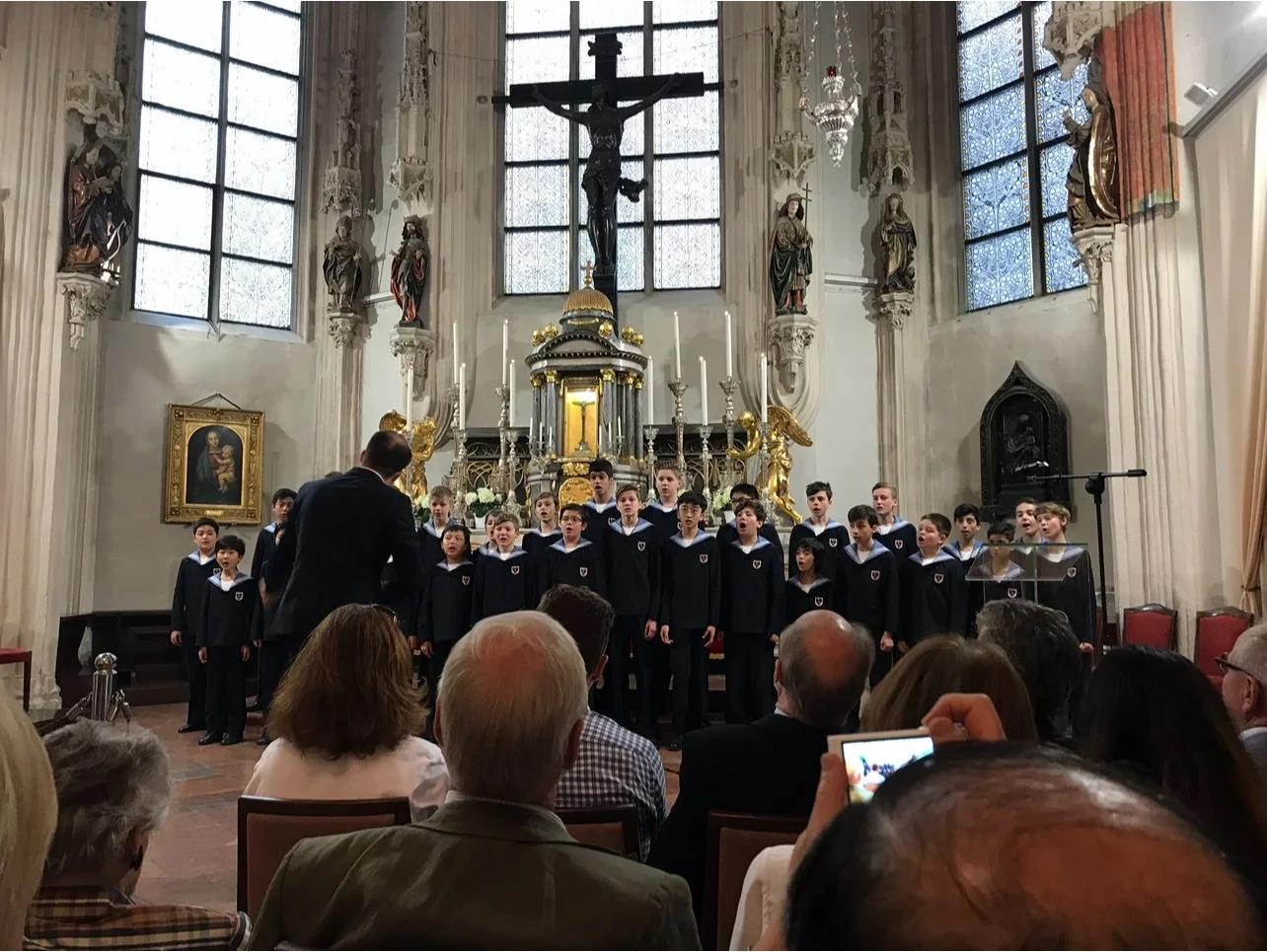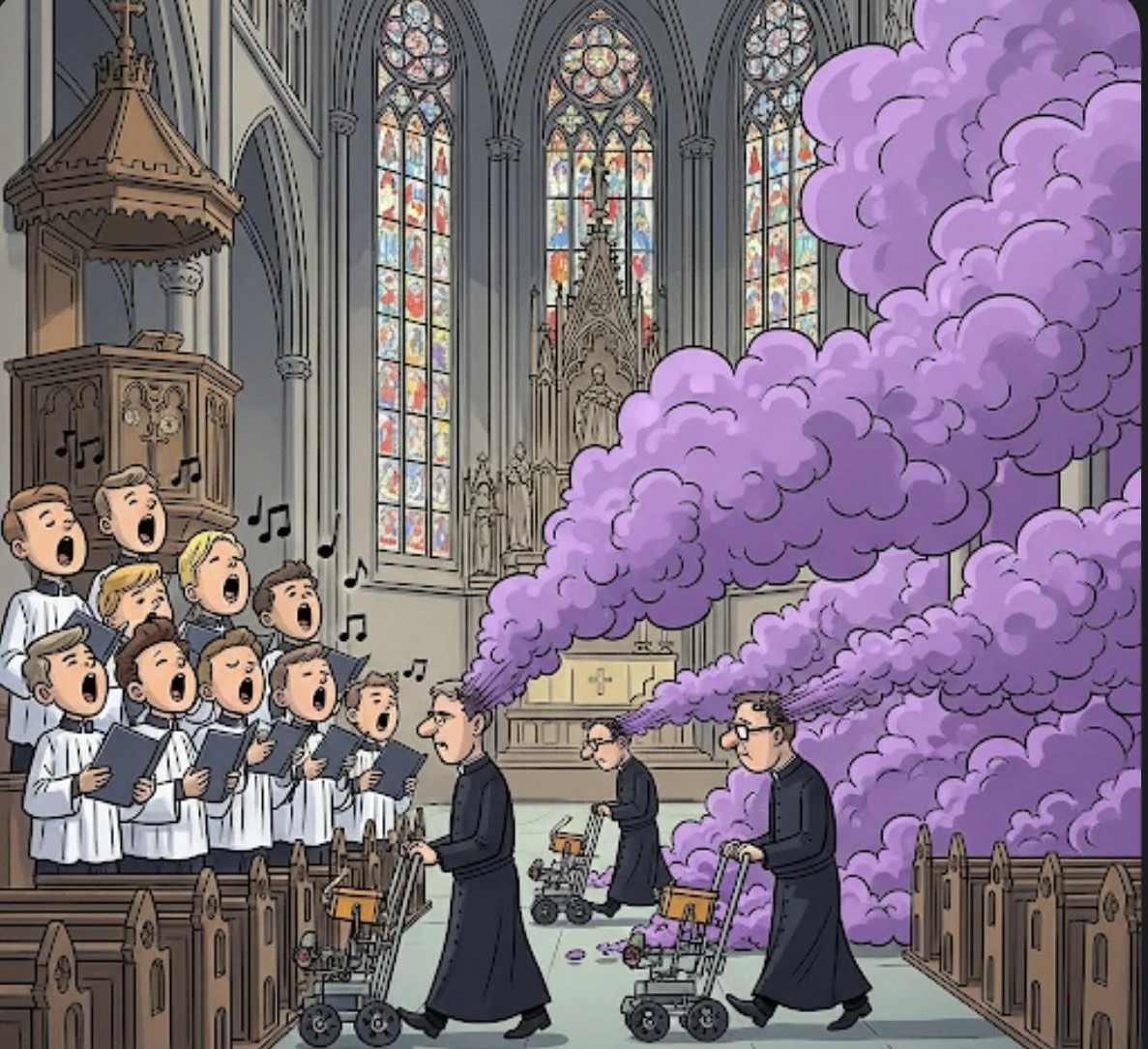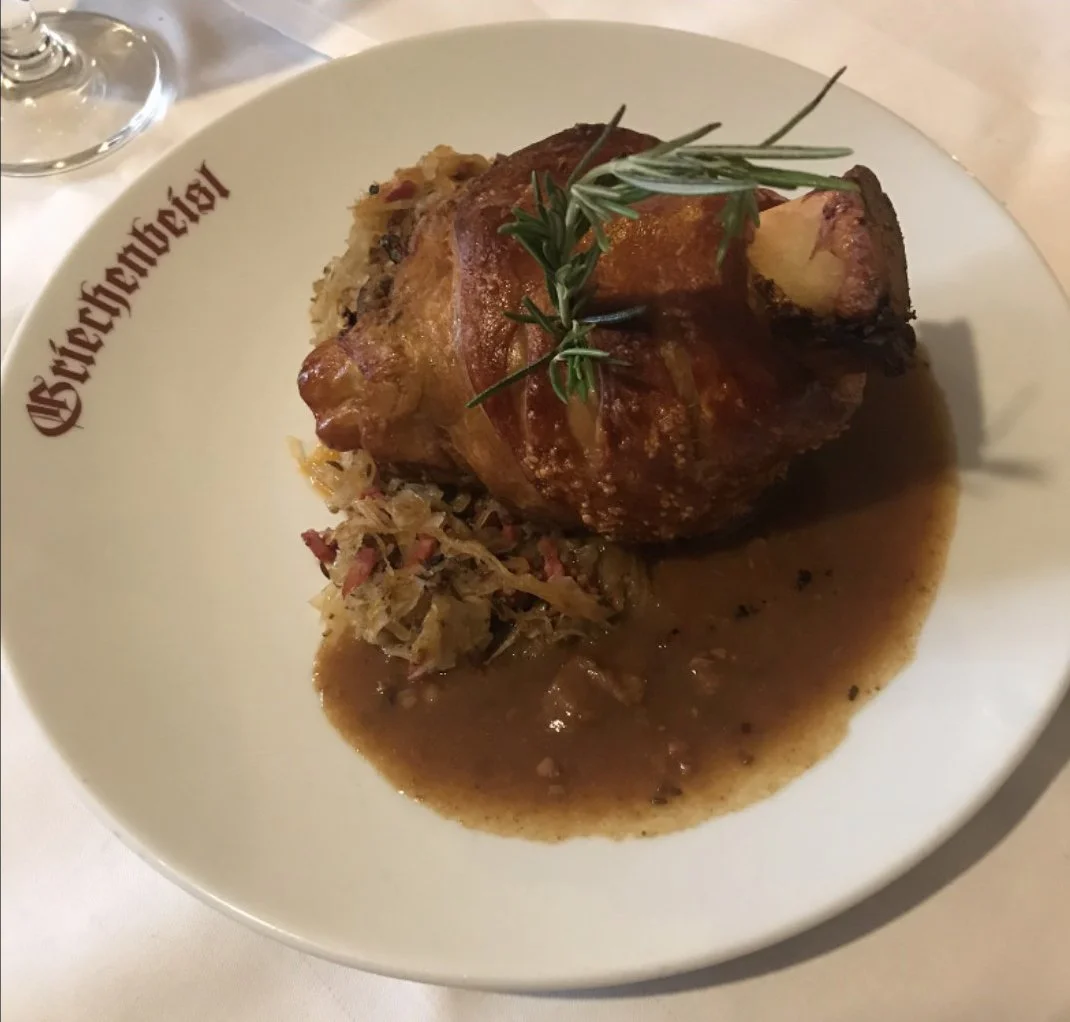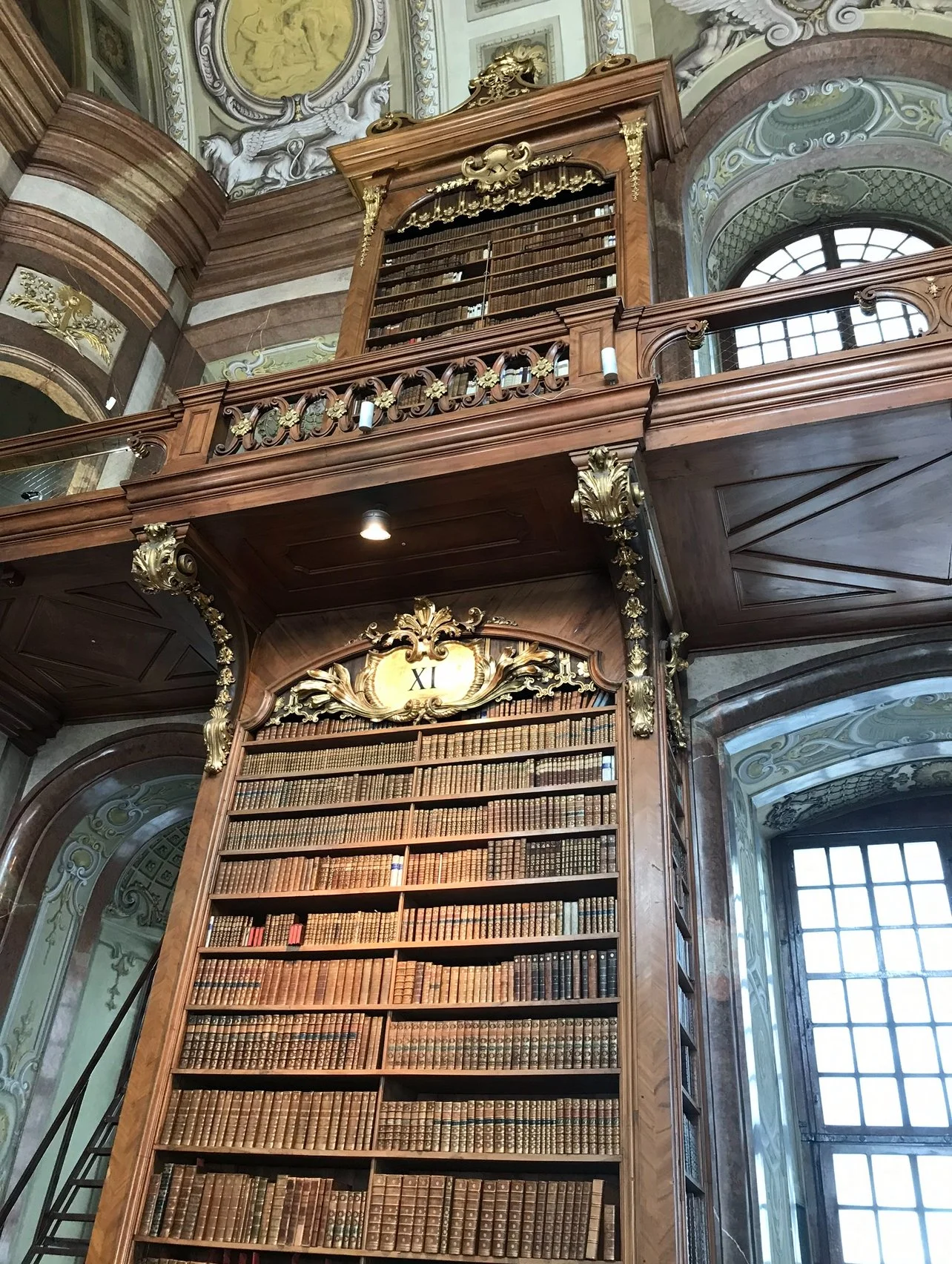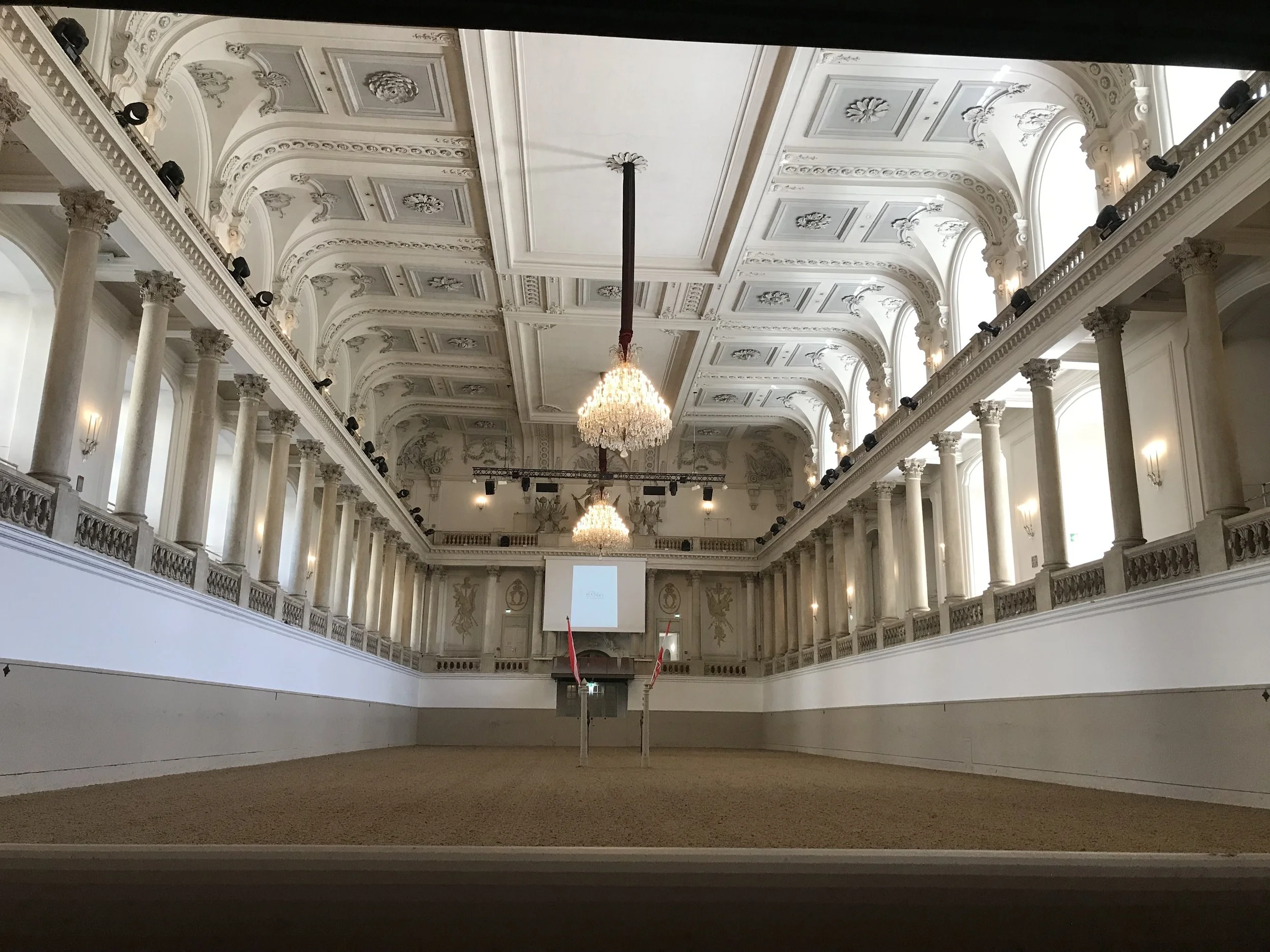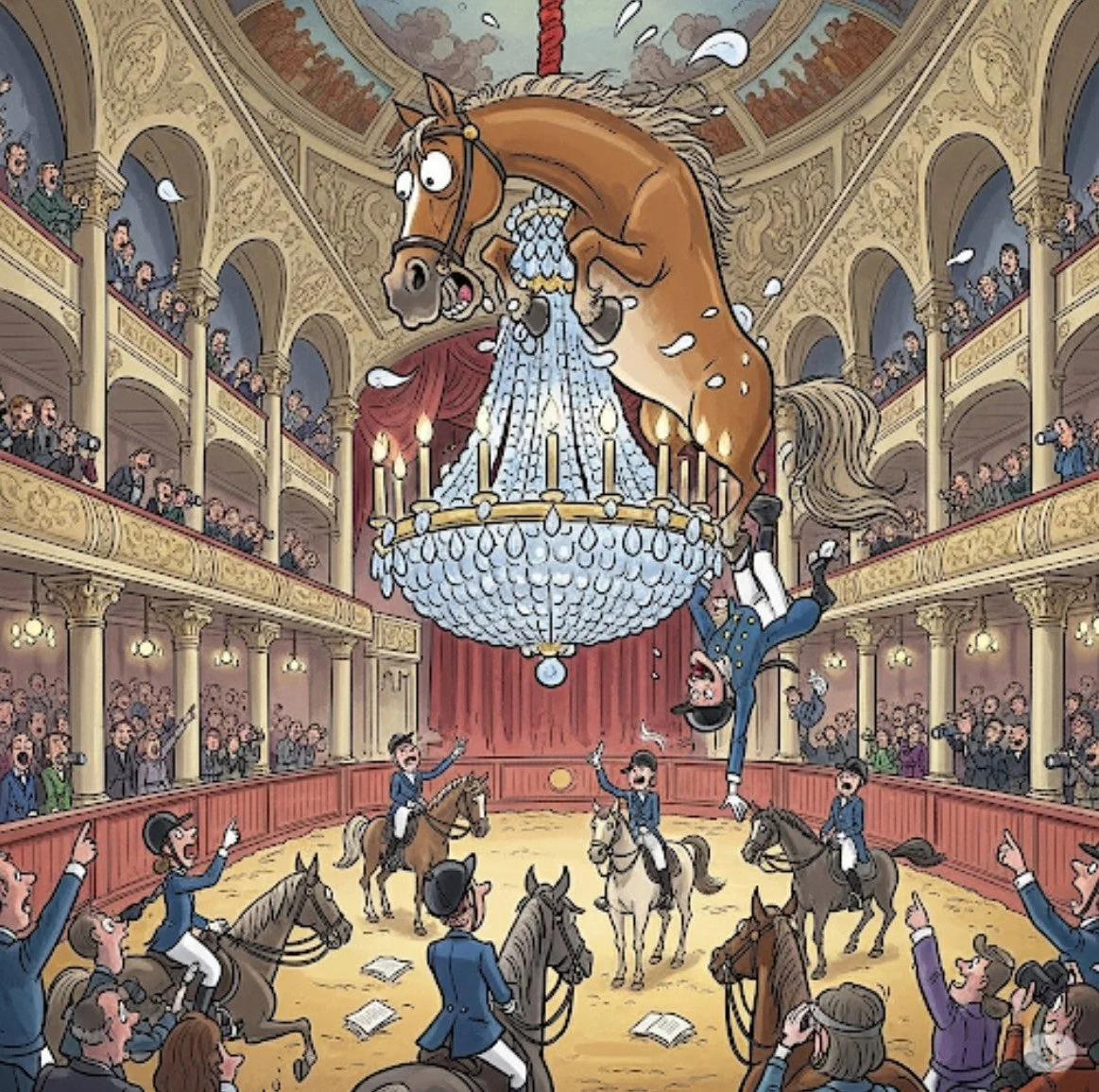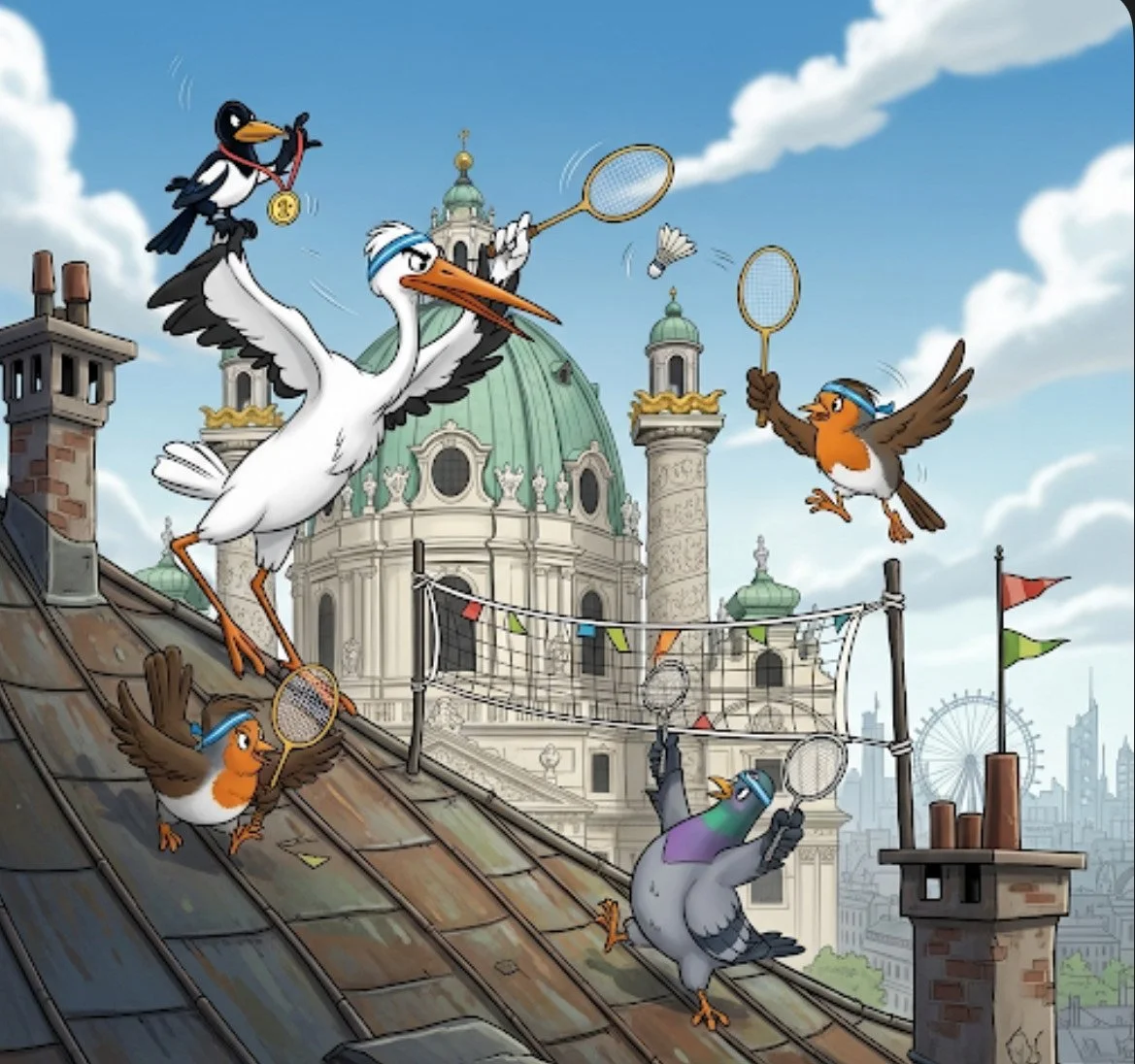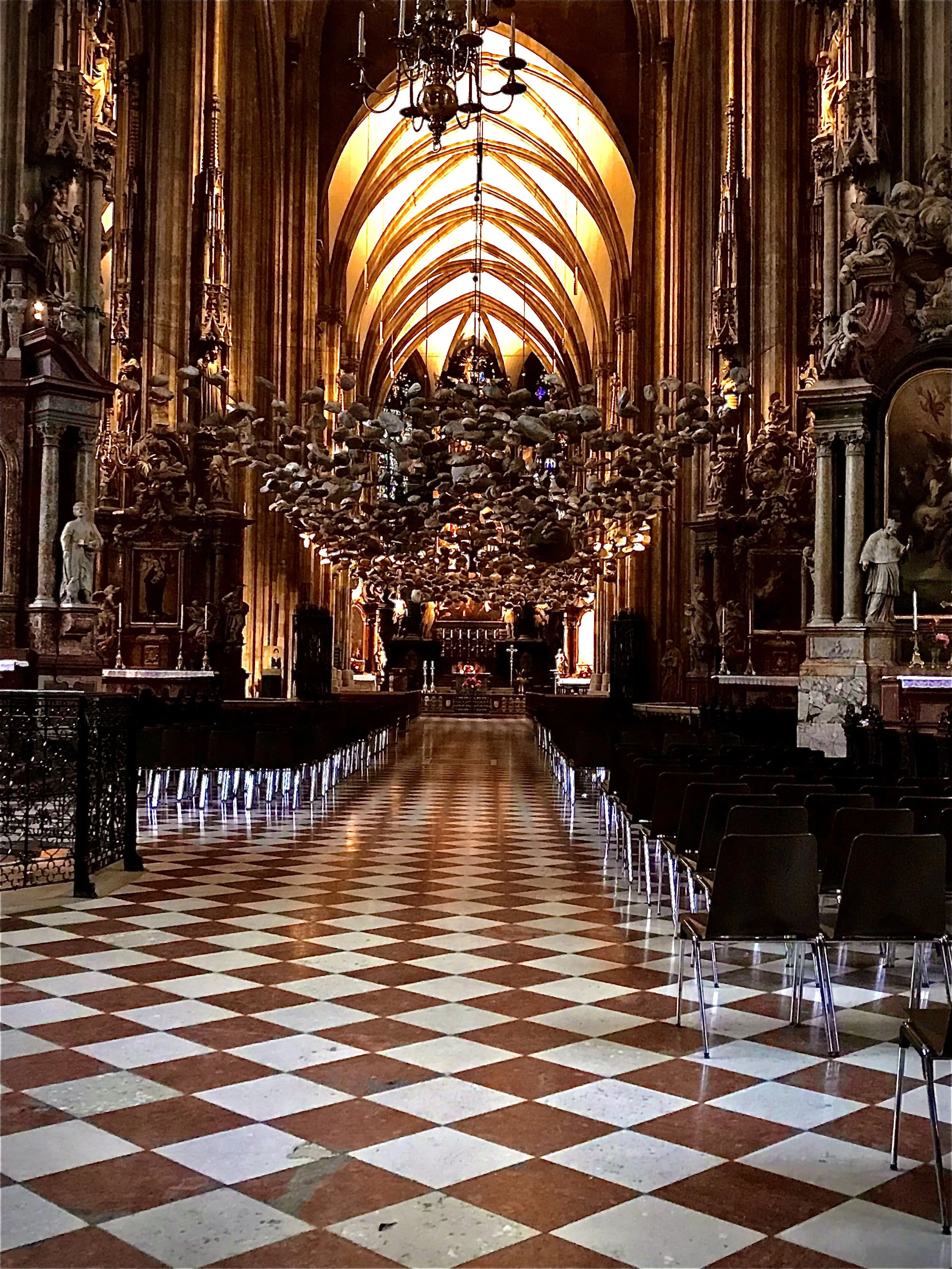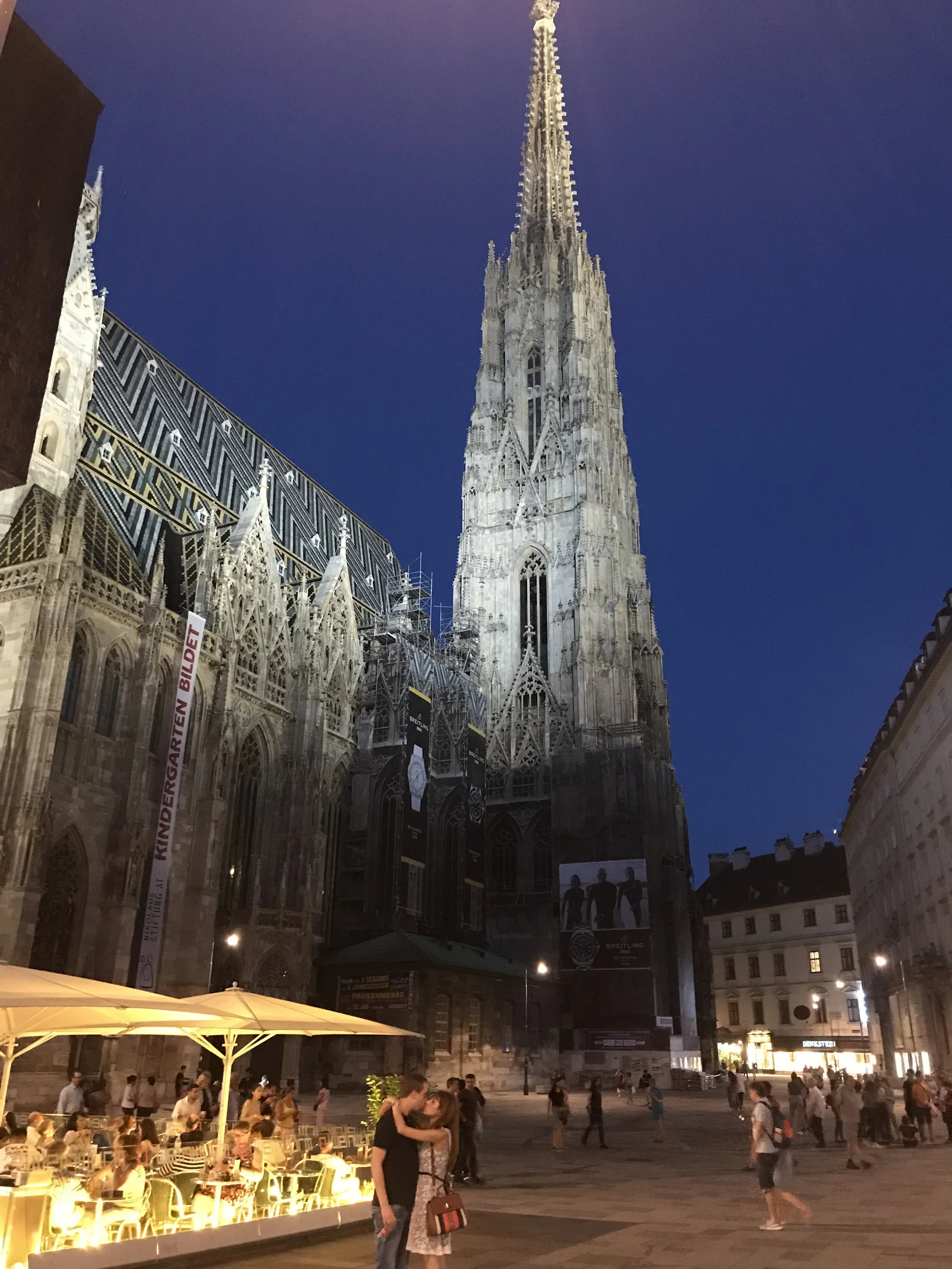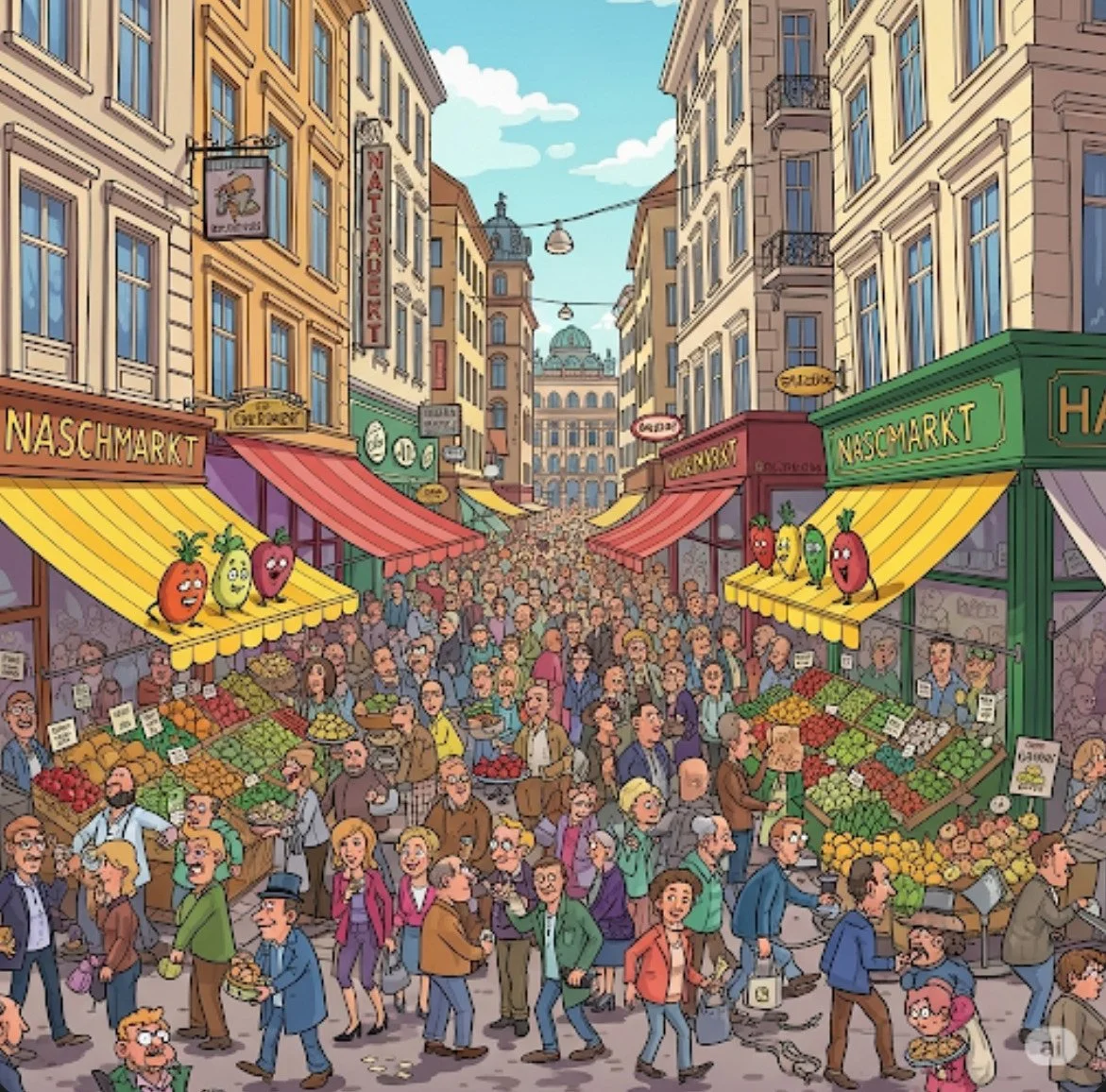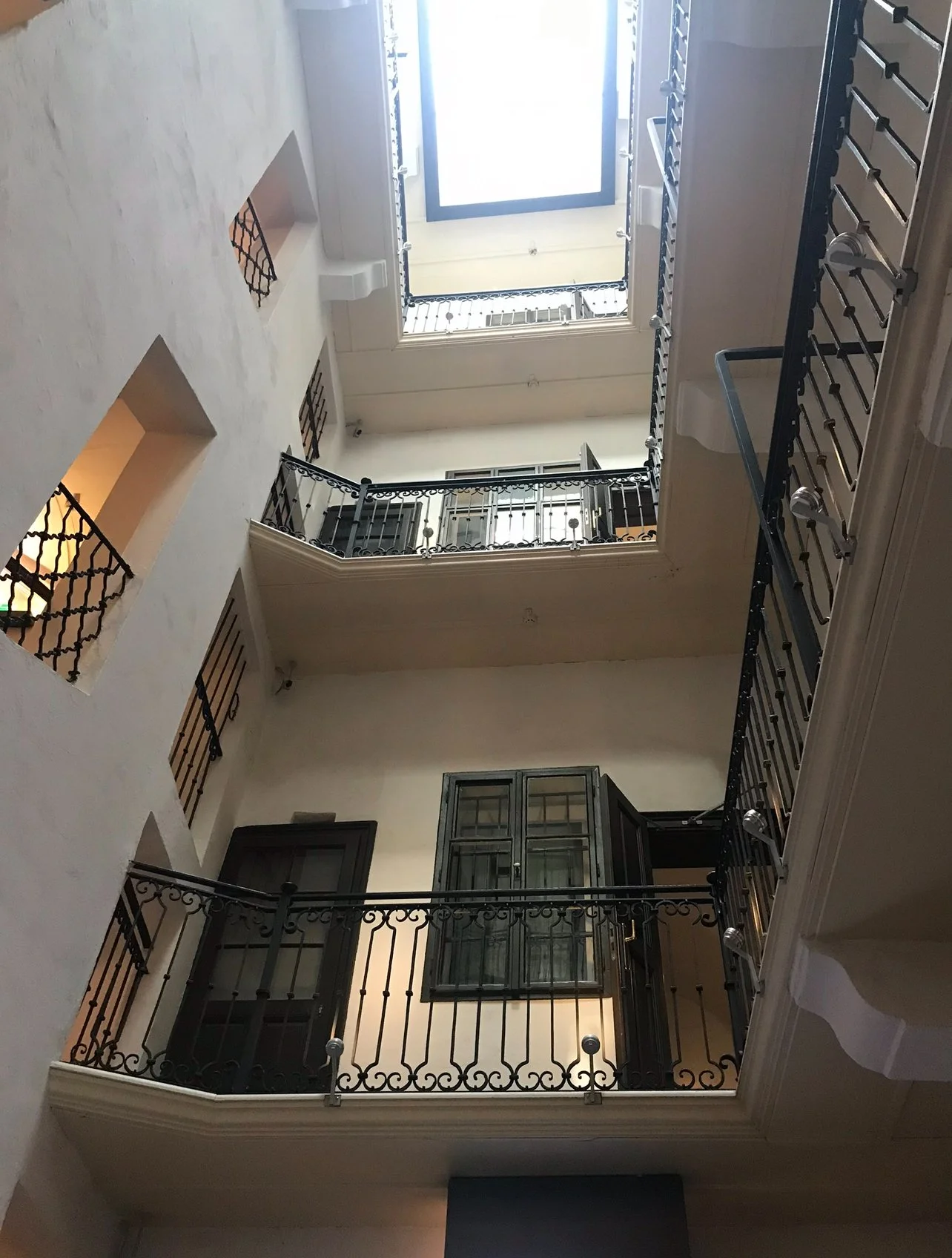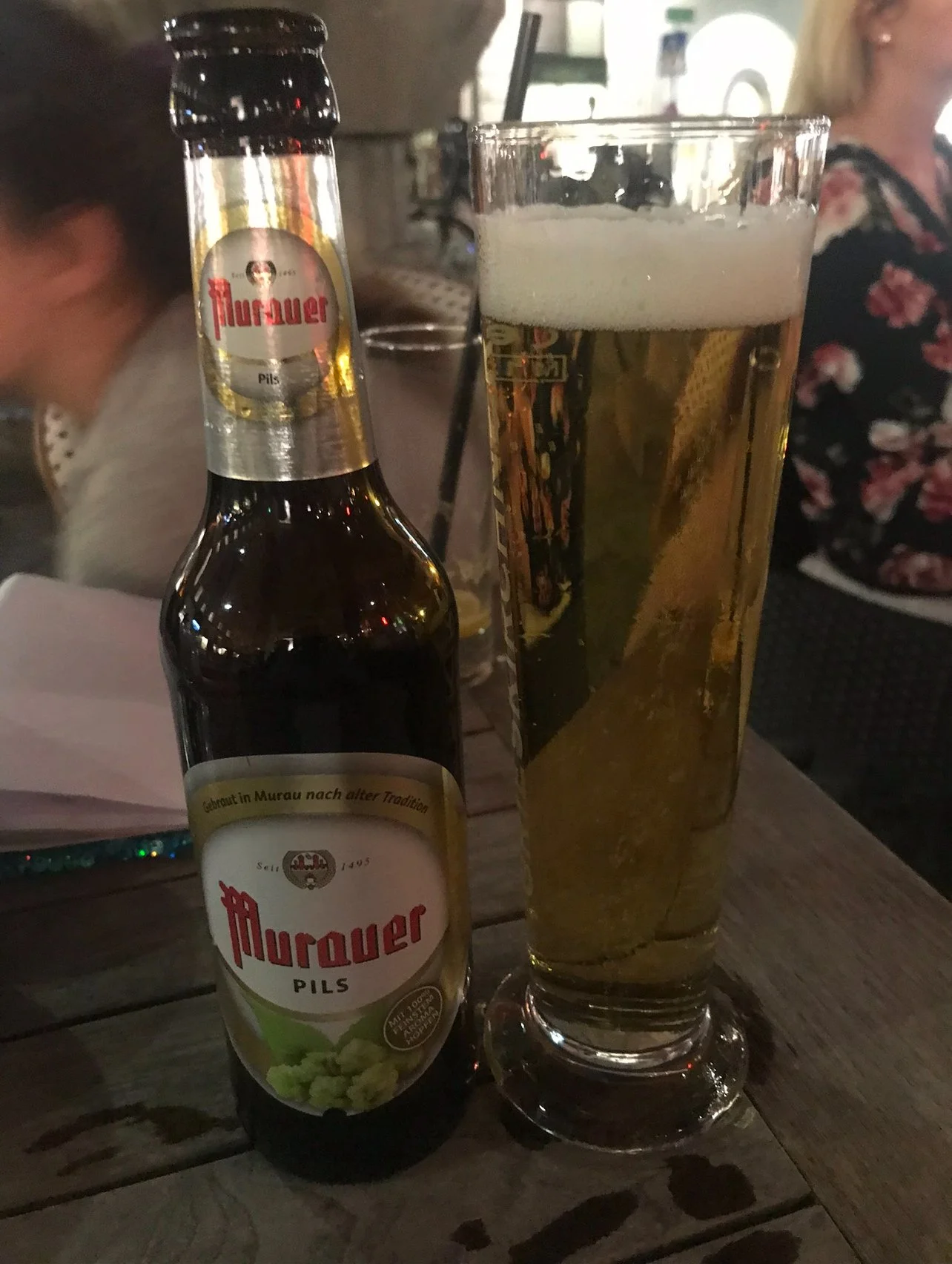A Handful of Euros and Half a Map - Exploring Vienna
10 Sites See the Next Time you are in Vienna
By Greg Evans
There is a lot to be said about a nice hotel room with coffee served at daybreak on a silver platter, restaurants with a fully stocked wine cellar, museums teeming with Monet’s, Rubens’, Picasso’s and concert halls pregnant with the music of Mozart, Beethoven, Hayden and Shubert washed down with a frosty Ottakringer. Where does an obstinate traveler who arrives in the beating heart of Europe go, jetlagged, slightly hung over, and ready to explore? Vienna, of course.
Vienna is my favorite city in Europe. It has everything you could possibly want or need as the ultimate destination. So I wanted to share a top 10 points of interest for any enthusiastic traveler to this exciting and miraculous city.
Our first jet-lagged stop would be to listen to pre-pubescent boys speaking to God through song? My mother, a legendary traveler who could put Marco Polo to shame, spoke of seeing the performance for weeks leading up to the trip. They better not disappoint. Also with us, my eager and enthusiastic daughter, Em.
VIENNA BOYS CHOIR
Hofburgkapelle – Hofburg, 1010
We hadn’t yet been off the plane for a full hour before dropping in to see the Vienna Boys Choir perform in the very spot where it began for them all those hundreds of years ago. Despite running on less than three hours’ sleep and some stale coffee, we weren’t going to miss it.
When you arrive at the main entrance a long snaking line crosses the large courtyard hundreds of parishioners deep. The trick is to purchase tickets beforehand thus bypassing the line. Or just cut everybody and hope you don’t get billy-clubbed to the ground. The choir was created in 1498 by Maximilian I as part of the court musical arrangement, but it wasn’t until around 1924 that it became the individualized spectacle it has today.
Consisting of boys between the ages of nine and fourteen from all over the world and headquartered in Vienna, the choir is broken up throughout the year into four groups of choristers that perform upwards of 300 shows per annum. Famed composers, Mozart and Schubert, both worked with the choir of their day. The chapel is actually quite small and very serene with beautiful stained glass and old worn marble. The small sanctuary was packed with what appeared to be mostly tourists.
A procession of priests and altar boys and a small choir of young men appeared from the back of the chapel and worked their way to the altar showering us with plumes of purple smoke from incense. The scent was flush with Frankincense and Myrrh and was quite strong. The music throughout Mass from both choirs was beautiful, and then more incense- and more after that. We all took communion and sang songs along with the priests and choir in our own languages and dialects, attempting Germany, assisted by lyrics on a pamphlet. It was uplifting and a once in a lifetime experience.
At the end these prepubescent altos and sopranos walked down from the rafters of the chapel and sang a few final numbers with precision pitch and perfect harmony. The talent of these children and the way the sound is distributed throughout the chapel is indelible. And then we got a few more blasts of purple incense smoke. At the conclusion we wandered back out into the sunlight feeling euphoric and I pondered a closer relationship with my spirituality or a lack of oxygen to the brain from smoke inhalation.
LEOPALD HAWELKA CAFÉ
Dorotheergasse 6, 1010
Vienna is a city that experiences all four seasons. So depending on your preference, there is weather for everyone - plan wisely. It is a city that is young and energetic, clean by urban standards, efficient, fairly low crime (best to be aware of your surroundings no matter where you are though) and it is manageable. The scenery is like a movie set with marble-chiseled men and beautiful renaissance women on every street, dressed in summer ditsys with the sexy front tie and shirred waist, sandals with toe nails painted in tulip red, Egyptian plum purple, Jaguar-tooth white with golden flecks, China blues, Moroccan oranges and Peruvian greens, hair with highlights like a sunrise.
I fall in love with every girl that I pass by. The people are jovial and every entrance way welcoming, fresh flowers are everywhere, it is enchanting. We reached a small café, The Leopald Hawelka, located on a street that I found to be more of an alley though cars did attempt to maneuver through it. Opened in 1945 and famous for their sweet rolls, it is located within shouting distance of St. Peters, just off the Graben.
We took a table outside beneath the awning, a small circular one with chic metal-wire chairs. The place was crowded with younger hipsters. Most were smoking cigarettes (not yet taboo in Europe) and wearing sunglasses despite the fact that the sun was gone for the evening (also not yet taboo in Europe).
The wait staff appeared quickly. He understood English enough for us to order: Iced chocolate milk for my daughter. My mother ordered a regular Viennese iced tea. And for me, the espresso that was supposedly unmatched. The drinks appeared minutes later. They said iced chocolate milk and I envisioned a cup of Hershey’s chocolate syrup squirted into cold milk.
Not a chance. This was Europe and in Vienna everything is done with pomp. It was a chocolate milkshake Habsburg style! Whipped crème, frothy milk, swirls of fudge, chocolate shavings in an enormous glass that resembled a West German beer Stein. The thing was gigantic. It was sumptuous. It was recherché. Beside it was a bowl of sugar cubes. It was like Bach’s Chaconne in glass with a side of diabetes.
Next the iced tea arrived, velvety-thick, sweet, vibrant, a rich copper mien like a sunset over the Atacama. Like a procession of exotic models, the drinks arrived. One-by-one down the runway. We had time to take each one in. The espresso came last. The grand finale. It was elegant, dark, silky, and mysterious. I felt guilty going in for that first sip. Like touching the prom date for the first time. It was smooth and rich and bitter all at once.
Each sip was like French kissing the most beautiful Italian woman in the village. Another sup, another rollercoaster of electricity, like falling in love all over again and again, and again, yet she stays just out of reach. We could have sat there all night, people watching, lazily slurping enough coffee to keep us up for two straight days, but there was more to explore. That is the thing about Vienna, there is always more to explore.
GRIECHENBEISL
Fleischmarkt 11
As dusk settled in we stepped through an ivy and ancient stone entranceway into what might be the most enchanting restaurant in all of Europe, Griechenbeisl. It is an old beautiful former inn serving Viennese Cuisine since 1447. The exterior resembles a cottage and sits back off the street behind the garden where diners can repose outdoors and enjoy their meal. Decorated with the comforting relief of the Virgin Mary, the restaurant at first glance, down a dim narrow corridor appears small and quaint, but the mind is tricked by the medieval layout.
The restaurant is far larger than it appears. Unlike the modern eatery, it is not one giant loud room packed with diners. Instead it is broken up into nine separate rooms (Carlsbad Room, Zither Room 1 & 2, Candle Room, The Round Table, Music Room, Hunting Room, Mark Twain Room and Biedermeier Room) giving diners a cozy feeling with personalized service though at one time the entire restaurant, if full, can sit a whopping 200 plus diners. Our dining room was famous as being the Zither Room 1 and entertained by a talented zither player.
If you pass the bar and enter a smaller room adjacent the bar dining area, you ascend a short staircase and enter a truly remarkable room, the Mark Twain Room. It is somewhat round in shape, sort of like an octagon, fairly small, seating a few tables but it is the ceiling and walls that catch your attention. They are covered with photographs and even more astounding autographs of famous people that have dined including Mozart, Beethoven, Mark Twain, Schubert, Strauss, Johnny Cash and others.
The building has miraculously survived incidents of devastation including flood and plague, two Turkish invasions, one where the defensive lines were so close the thunderous impact and blast of cannon balls could be felt by guests and staff. It survived World War II and the destructive Nazi occupation and continues to thrive today. The menu was loaded with sirloin and beef medallions, Austrian deer, creamed Viennese potatoes, mashed pumpkin, asparagus, liver dumplings, crepe soup and a number of other delicacies but my willpower was toppled, or maybe it was that first ½ liter of Reininghaus JahrgangsPils that softened my inhibitions.
When the waiter approached I vociferously blurted out my order, “Leg of Pig,” as so articulately stated on the menu. He nodded. I nodded. I could tell right away that he too had been to this crossroad. The others ordered Austrian Ravioli and Asparagus with Ham respectively.
This gigantic piece of bone and meat and fried skin dripping with goblets of fat resting comfortably on a bed of rich spicy gravy and pickled and seasoned cabbage with a sprig of fresh rosemary turned alive every sense in my body. I think a few new senses were created as well. I don’t ascertain words could adequately describe the true delight of the moment the fatty, tenderized pork combined with the sour cabbage and spicy sweetness of the gravy touched this man’s tongue, but it was primal.
It felt omnipotent, a sensation of virility with each steaming mouthful. Every ounce of the beast was consumed and all that remained on the plate were a few cleaned bones. As I stumbled from the hostelry I couldn’t help but notice the twinkle of the stars in the night sky were brighter. The torch-like laterns gave the street a feeling of romance and lovers whispered and frolicked in the ancient shadows. Vienna is the sexiest city on earth. There is no place like it.
AUSTRIAN NATIONAL LIBRARY
Josefsplatz 1, 1015
Vienna is the type of city that you go with a plan but you allow yourself the freedom to freelance a little and stop by interesting locations that you may not have initially picked out while reading through a guide book. At one point we found ourselves in a giant courtyard at Josefsplatz 1, surrounded by large elegant buildings. One of the buildings had an entranceway and tourists kept funneling in and out. We had to investigate. It turned out to be the Osterreichishche Nationalbibliothek (The Austrian National Library). We proceeded to purchase tickets and then climb a set of old worn stairs that looked as if they’d been around since Vindobona.
At the second landing you come to two glass doors and through them enter possibly the most breathtaking library on the planet. If ever there were a time when you had to define Vienna using a single image, gazing into the library would be it. Old leather-bound books stacked on handcrafted bookshelves with ladders climbing to a ceiling, a fresco painted with such magical illusion it rivals Michelangelo’s work at the Sistine Chapel. There is an angel stepping out of the ceiling as if leaping down onto the people below. The interior resembled a baroque Cathedral and the quality of art worthy of a museum.
There were maps dating to the time when little was known of the New World, North and South America depicted as mere islands. There were four fantastic Venetian globes the size of Volkswagen Beetles and books from around the world covering a multitude of topics including one handwritten book from Constantinople circa 1360. I’m going to go off the reservation here for a minute, because the year 1360, when you look up events, there’s not much there. For the people who lived through some of the events it was real heavy. In a field in France, 1,000 soldiers perished due to lightning strikes and hail. Imagine that.
You mostly find reports about one ruler sending soldiers to fight the soldiers of another ruler over their own personal bullshit. In 1360 in Denmark, in the month of June, Valdemar IV Atterdag attacks Skane and conquers Lindholmen Castle on the banks of the Börringe. You can image more teenage boys, soldiers much like ours today, who died horrific deaths to take or defend this castle. If you go to the spot where this event took place today, it is a mound of green grass under a quiet blue sky. A few trees sit on the horizon. The castle is gone. The blood is gone.
Even the memories have faded away. All that remains are a few footnotes and a lump on the earth. I just have trouble wrapping my mind around such senseless slaughter. You get one life to live and it’s snuffed out because of some schmendreck’s hubris. Things like an old dusty book really gets into my head and I go through wormholes for hours and even days. It’s such things that makes traveling so important and interesting.
The idea for a library came from Holy Roman Emperor Charles VI in 1722 when he was just 37-years old. In 1786 Mozart played the piano and sang in the Great Hall. Nearly all famous libraries throughout history were started with personal collections and this one was no different starting with 15,000 volumes of Prince Eugene of Savoy’s collected works housed there. Today there are over 200,000 books.
SPANISH RIDING SCHOOL
Michaelplatz 1
You don’t have to be a horse lover to enjoy a stop at the Spanish Riding School, where performances by the white Lipizzan horses take place within a beautiful square arena called “the White Riding Hall (constructed in 1729).” The arena is oddly square instead of round and surrounded on four sides by columned spectator seating. Located at Hofburg Palace and founded in 1572, the school is considered to be the oldest of its kind in the world.
Tourists can find seating wherever an open seat is available to observe the trainers and their stallions practicing beneath the most unique of roofs decorated as one would expect any royal equestrian theater to be, with three dazzling chandeliers. The roof itself is intriguing because it appears to be beautifully carved marble, which would be extremely heavy, but it is all an illusion.
While building the hall, architects realized that the roof, noticeably not supported by any columns in the middle of the arena, would be too heavy and collapse, so they built a roof over the roof that was heavily supported. Architects then proceeded to hang the arena roof (the ceiling you see from the spectator seats) from the roof above. It is a work of architectural genius. And it is not marble at all but instead stucco painted to look like marble. Everyone should stop by and watch the Lipizzan horses in action, it is a sight to behold and afterwards tours are available to see the stables.
KARLS CHURCH
Kreuzherrengasse 1, 1040
We wandered down across the RingStraBe to the KarlsKirche at Kreuzherrengasse 1, with its dome and two steeples that made me think of the Taj Mahal. Upon entering the spacious sanctuary alit with shimmering gold and vibrantly colored frescos we were stunned by the giant and I mean giant mirrored sphere seemingly dangling in mid-air above the pews like a planet in the night sky. I have never seen anything like it before. Also within the church is an elevator that takes the curious to the roof of the cathedral up near the bell tower.
A well-secured scaffolding allows tourists to view the sanctuary from high above and admire the incredible frescos up close. From below the detail of the art is breathtaking and one can’t help but wonder how every ripping muscle and shadow appears so defined. Upon gazing at the artwork up close on the scaffolding it comes to one’s attention that many gold lines drawn in a hatching style is what gives the painting such a realistic appearance. It made me wonder if all the work I see on ceilings are done in the same manner in all churches and if the gold paint used was actual gold.
That church is a must see for anyone interested in theological architecture, art history, frescos, murals and the bizarre. Here I came upon a quandary in my explorations of churches and cathedrals trying to determine what is a mural as opposed to a fresco? The terms are loosely and regularly thrown around by tour guides and books, like saying coffee and espresso, but what in the dickens are they? After some digging I decided the leonoramural.org provided the clearest understanding. They say, “A mural is a pictured painted directly onto a wall’s surface using acrylic or household paint.
A fresco has been bound to the wall by applying pigments, usually made from ground up stone or earth and mixed with lime, directly on to wet, fresh plaster.” I feel it would take a well-trained eye and one educated in architecture, art history and technique to readily be able to discern the difference with the naked eye.
ST. STEPHEN’S CATHEDRAL
Stephansplatz 3, 1010
You don’t have to be a Bible-thumper or born-again to sense something powerful, if not moving within the dark walls of this divine Gothic and Romanesque structure. A trip to Vienna is simply incomplete without a sojourn to Saint Stephen’s Cathedral and taking the charming if somewhat claustrophobic elevator ride up to the North Tower at sunset, ferried by a jolly elevator conductor in a tiny coffin-like windowless space of about 3 feet by 3 feet with a ceiling no higher than Taylor Swift in stilettos. I prayed to God, Buddha, and even Bhagavati for us not to breakdown, perspiration pouring down my forehead as like everywhere else, air-conditioning in Vienna is somewhat of an inconvenience.
The view from roof of St. Stephen’s was exquisite and reminded of the heaven I nearly saw while drowning in a lake in Upstate New York at 8-years old. I felt engulfed by a peaceful, warm feeling like being nestled to the soft breast of the sunset. There was a steady strong breeze blowing, a beautiful tangerine sun dipping below the mountains in the distance and the temperature comfortable around 23 degrees C / 73 degrees F. It was perfect and for the young couples up there with us, romantic as any postcard. We stayed absorbing the view for quite some time, becoming one with the sky, hypnotized by the beauty and span of ages splayed out before us. We eventually returned to the elevator for the descent back to earth and explored what we could of St. Stephen’s.
The cathedral is a masterpiece created by architect Anton Pilgrim whose statue portrait can be seen on the wall just above the door that leads to the elevator we took to the north tower. Construction began in 1137 as a dedication to Saint Stephen in honor of German nobles about to head off to fight in the Second Crusade. The church wouldn’t be completed until around 1511 and restoration would continue up to the present day. Somehow the structure survived World War II, but barely. Wehrmacht Captain Gerhard Klinkicht ordered his men to “fire a hundred shells and leave it in debris and ashes.”
This destruction thankfully never materialized though civilians looting stores ignited fires as the red army entered the city. Strong winds carried the flames to the cathedral lighting the roof on fire and severely damaging the structure forcing the ceiling to collapse. After the war reconstruction began but the cathedral wouldn’t officially reopen for nearly a decade until 1952. St Stephen’s is the site of the marriage between Mozart and his wife Constance and where Mozart’s brief funeral was held. Composer Antonio Vivaldi’s funeral was also held there. The Pummerin located in the north tower is the second largest free-swinging church bell in Europe.
From that elevation provides an excellent view of the tiled roof in the image of the Imperial double-headed eagle, the coat of arms of the city of Vienna. It is said that each tile represents a donation by a family helping to rebuild the damage from the fire. The interior is exquisite, decorated with relics and ornaments glittering with gold and precious stones, vestments, bays of prayer candles, and statues all that tell a story. The black and white checkered floor creates an illusion within the sanctuary that is stretches a great distance to the altar. Also within the cathedral are the resting places of numerous high-profile people including the tomb of Prince Eugene of Savoy, Duke Rudolph IV (the man who laid the cornerstone for the reconstruction of the building in 1359), Emperor Frederich III as well as other prominent people in the catacombs down below.
VIENNA HORSE-DRAWN CARRIAGE RIDE
Innere Stadt (Old Town)
One thing everyone must experience is the horse and buggy ride around the city. The cost of it is about 50 - 55 Euros / $56 - $61 US / 73 - 80 Canadian dollars for twenty minutes, 80 Euros / $90 US / 117 Canadian dollars for 40 minutes etc. It is expensive. But Europe is expensive. The luck of the draw is landing an enthusiastic driver interested in sharing the history and sites of the city throughout the ride. We picked up our carriage at Saint Stephan’s Cathedral though there are multiple places including outside the Albertina Museum as well as at the Spanish Riding School.
Our driver was a large, burly man with a traditional costume and very soft-spoken heavily accented delivery. He had a swagger and was very much a showman as one would hope for with a tour guide. Our route took us on an excursion spanning nearly a millennium. Early on in the ride we came to the second oldest restaurant in the city (Gosser Bierklinik). From the outside it was quaint and charming and a tavern you might expect to see Gaston LeGume. Then we passed an old firehouse and the Hall of Mirrors, the former summer residence of the Habsburgs, where Mozart first performed at age 6 for Empress Maria Theresa.
It is said that after the show he jumped onto her lap and gave her hugs and kisses. We passed the old Roman ruins discovered right outside of the Spanish Riding School and well-known statues and a few other interesting historically significant sites. The driver took us over old cobble-stoned streets so we could experience what it felt like back to the time of actual horses and buggy transportation. It is a jostle of a ride, thrown and bounced about much like in a golf cart over rough terrain. It also must have been incredibly loud with so many about and the klop, klopping of horses and the rumbling of wooden carriage wheels.
And don’t forget the streets filled of horse manure and the very pungent and unpleasant odor of horse urine that is so strong it can be smelled from atop of St. Stephen’s Cathedral with a properly blowing breeze. But Vienna is such a quaint and grandiose city that horses and carriages fit perfectly within its streets and we can overlook some of the disconcerting aspects. All that was missing on the ride was a nice cigar and a tumbler of Stroh. It was nearing dusk so the atmosphere was ambrosial with the elderly sun’s orange, red and golden rays tilted and slanted across the city generating a sentimental dim and winsome shadows as the street lights flickered to life.
NASCHMARKT
Kettenbruckengass 1040
As hunger sets in one can find a buffet of culinary madness at Naschmarkt. This is within walking distance of the old section across the RingStraBe. In operation since the 16thcentury, Viennese residents and tourists come to the 100+ stalls that stretches about 12 city blocks or ½ a kilometer in length in search of seemingly any culinary concoction or produce one could desire. The array of food choices was staggering. For a snack I purchased dates from one stand and my daughter dried watermelon from another.
There was seafood and meats, cheeses, teas, spices candy, gelato, pastries, nuts, fruits and vegetables. For our lunch we ate at an Asian noodle stand. There was schnitzel or stuffed mushrooms, sandwiches, kimchi, curry, sushi or kabob, they even had hotdogs and pizza for those looking for some Americana and so much more. But the stalls aren’t only food and drink. There are also clothing, leather, incense, cookery, pottery, hemp and trinket stalls for the shopaholics.
It is a place you go on a day when you have time to mosey and one could spend hours perusing the stalls, tasting the different treats the vendors literally force feed to you or just people watch. Naschmarkt encompasses the multiculturalism that Vienna embraces and has since the Greek merchants first arrived to trade hundreds of years ago.
MOAZATHAUS
Domgasse 5
Mozart House
One of my favorite spots was the Mozarthaus, the former living quarters of the world’s most famous composer, Wolfgang Amadeus Mozart, and his family. Born in the city of Salzburg, along the northwestern border of Austria and Germany in 1756, Mozart relocated to Vienna in 1781 when he was 25. Along with his wife Constance and their two children, they would live in nearly a dozen apartments in Vienna’s old section, though spending the longest amount of time at Domgasse 5. Evidence of Mozart’s life is all over Vienna.
Walking into the courtyard area of Domgasse 5 and gazing up at the building and the stairs was like walking into the 18th century. Little had changed, and the view was not all that different than the one the great composer had seen during his short life. The stairs were old and worn. At least twelve times, his grand piano was lugged up and down the narrow staircase and taken to venues for performances. I stood there trying to visualize the logistical effort. The apartment itself was spacious and beautiful. It was haunting in a way, knowing that such genius once lived day-to-day right there in those rooms, taught lessons, entertained friends, and created his masterpiece, “The Marriage of Figaro.” An audio-guided tour picked up at the ticket counter offered insight into his life and times while residing there.
Sitting on the airplane 37,000 feet over the Atlantic, I leaned back in my seat, watching the clouds going by below, and felt like a piece of me was being left behind. Every now and then, you go somewhere and immediately realize that it is a place you belong. For me, that is Vienna. That is my happy place. I will return. Very soon. Gute Nacht!


